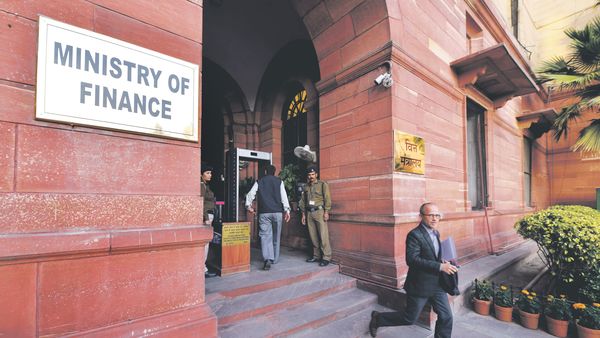New Delhi: The government is likely to opt for auctioning of more cash management bills (CMBs) to meet the debt obligations of government bonds in the next fiscal standing at Rs 3.02 lakh crore to avoid putting pressure on higher borrowings from the market.
Higher market borrowings can impact fiscal deficit. The redemption pressure that is to come in FY 21 include, on April 9, the debt obligations government has to meet is Rs 35,268.36 crore whole on April 22, the amount is Rs 6,000 crore and on May 3rd, the redemption pressure is of Rs 71,130 crore and on June 9, it is Rs 67,182 crore, as per RBI data.
Though the Union Budget 2020 will decide the fiscal deficit for the next financial year, it is now almost certain that the current fiscal deficit of 3.3% may be unattainable given the weak tax and disinvestment revenue positions.
Excess borrowing to meet debt servicing will create further mismatch between the revenue and expenditure which the government may try to avoid next fiscal. This leaves to banking on CMBs more for debt servicing to a large extend, said sources.
The Reserve Bank of India (RBI) Friday announced the auction of a 63-Day Government of India Cash Management Bill. The central bank carries on the auctioning of GSec on behalf of the government.
Cash Management Bills are short term bills issued by the central government to meet its immediate cash needs. The bills will be auctioned on Monday and will mature on March 13, 2020 will raise Rs 30,000 crore.Government bonds worth Rs 61,000 crore came up for redemption on January 2 when investors received the money back with interest, RBI data revealed.
Similar maturities are falling due next two weeks for Rs 74,000 crore. On January 16, the redemption demand for Rs 74,000 falls which is a 8.19% G-Sec issued on January 16, 2012.
The central bank has announced its third ‘operation twist’, a move in which the government’s banker will buy G-Secs of long and medium tenure worth Rs 10,000 crore and at the same time sell government bonds of less than one year tenure. This is the third such operation by the RBI in as many weeks, aimed at pulling down the 10-year benchmark yield, which is a key determinant of the lending rates by banks.
CMBs have a tenor usually less than 91 days while the T-bills have tenor 91 days, 182 days and 364 days. The day of issue of CMBs depend on the temporary cash requirement of the government. Since the government’s revenue position is weak and the revenue expenditures are high , there is already a risk of running.
RBI last year cut interest rates five times totalling 135 basis points . On December 19, it announced the first tranche of “Operation Twist”, and the fall in yield on the 10-year G-Sec was 80 bps to 6.75%. But after three tranches of the operations, the benchmark yield fall on 10-year G-Secs has been 24 bps to 6.51%.
